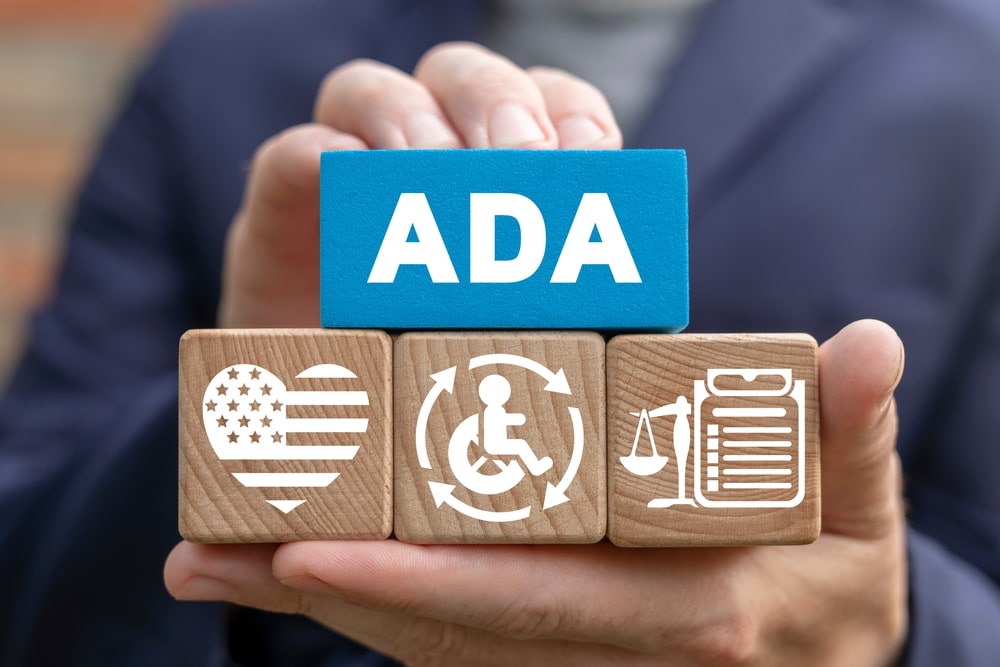Australia and New Zealand have implemented robust accessibility laws for websites, ensuring that all users, regardless of their abilities, can navigate online spaces effectively. These regulations mandate that websites must meet specific accessibility standards to provide equal access to information and services. Compliance with these laws fosters inclusivity and helps organizations avoid potential legal repercussions.
Australian accessibility regulations are governed by the Disability Discrimination Act (DDA), which requires online content to be accessible to people with disabilities. Similarly, New Zealand enforces web accessibility under the Human Rights Act and the New Zealand Government Web Accessibility Standards. Organizations in both countries must adhere to these guidelines, making their websites usable for everyone.
Adhering to web accessibility standards benefits businesses and users alike by improving user experience and reaching a broader audience. By designing accessible websites, companies can enhance customer satisfaction and loyalty, ensuring their digital presence is welcoming to all community members. One convenient way to achieve compliance with accessibility standards is by using a website accessibility widget like Accessibly. Contact us to learn more.

Legal Framework for Accessibility
Australia and New Zealand have several key legislation that govern accessibility laws, each addressing various aspects of disability rights and access to digital content.
Disability Discrimination Act 1992
The Disability Discrimination Act 1992 (DDA) is a pivotal legislation in Australia. It aims to eliminate discrimination against individuals with disabilities in various areas, including access to websites. Under the DDA, it is illegal to discriminate against someone based on their disability, and this extends to digital platforms.
Website owners in Australia need to ensure their sites are accessible to all users, including those with disabilities, to avoid potential legal repercussions. Non-compliance can lead to complaints filed with the Australian Human Rights Commission or legal actions in federal court.
Human Rights and Equal Opportunity Commission Act 1986
The Human Rights and Equal Opportunity Commission Act 1986 (HREOC Act) established the Australian Human Rights Commission (AHRC). The AHRC is responsible for handling complaints related to human rights violations, including those involving disability discrimination in accessing websites.
This Act provides the AHRC with the authority to investigate complaints and offer solutions. It also plays a crucial role in promoting public awareness and understanding of the importance of accessibility and the rights of individuals with disabilities.
Australian Government Legislation
Various other pieces of Australian Government legislation support accessibility and the rights of individuals with disabilities. These include the National Disability Strategy 2010-2020, which outlines a plan for improving the lives of people with disabilities, and the Web Accessibility National Transition Strategy, providing guidelines for public sector websites to comply with accessibility standards.
These legislative measures underscore the government’s commitment to making digital content accessible. They also establish a structured approach to ensure that public and private sectors adhere to accessibility laws, promoting a more inclusive society.
In sum, the combined effect of these laws ensures that Australia remains committed to protecting and promoting disability rights in the digital space.
Understanding Web Accessibility
Web accessibility ensures that websites are usable by people with various disabilities. It encompasses design principles and the use of assistive technologies to overcome accessibility barriers.
Principles of Accessible Design
Accessible design in websites focuses on creating an inclusive online experience. Adhering to Web Content Accessibility Guidelines (WCAG) is crucial. These guidelines emphasize providing text alternatives for non-text content, ensuring content is navigable and readable, and making functionality available through keyboard navigation.
Design elements such as proper color contrast, resizable text, and clear headings can aid users with vision impairments. Accessible websites should also avoid flashing content to prevent seizures in individuals with photosensitive epilepsy.

Assistive Technologies Usage
Assistive technologies play a critical role in online accessibility. Screen readers convert text to speech, helping those with vision impairment. Users with low vision benefit from screen magnifiers, while keyboard navigation supports individuals unable to use a mouse.
Voice recognition software assists those with mobility impairments by allowing speech-to-text functionality. Moreover, websites can integrate features like text-to-speech for improved digital accessibility. Such technologies help bridge the gap, ensuring all users can access web content effectively.
Compliance and Guidelines
To ensure websites and web pages meet accessibility requirements, it is essential to follow specific guidelines and procedures related to the WCAG standards. This helps create a more inclusive digital environment for users with disabilities.
WCAG Standards
The Web Content Accessibility Guidelines (WCAG) serve as the international standard for web accessibility. These guidelines focus on creating web content that is perceivable, operable, understandable, and robust (POUR).
WCAG is structured into three levels of compliance: A, AA, and AAA. Level AA is typically the target for most websites as it balances accessibility and feasibility. Compliance with Level AA ensures critical elements like text alternatives for images, keyboard navigability, and readable text contrast are met.
Implementing these guidelines involves using semantic HTML, providing captioned multimedia, and maintaining a logical tab order. Web developers and designers must frequently refer to the WCAG to guide the development process and ensure compatibility with assistive technologies.
Compliance Procedures
To ensure compliance with accessibility guidelines, organizations typically follow structured procedures. The first step is to conduct an accessibility audit, which identifies areas of non-compliance on the website.
Following the audit, remediation involves addressing these issues, such as adjusting color contrast or adding descriptive alt text. After fixes, it’s crucial to perform user testing with individuals with disabilities to validate the changes.
Documentation plays a critical role in maintaining compliance. Keeping detailed records of accessibility features and updates helps demonstrate ongoing commitment and compliance with accessibility laws. Regular training for web development teams also ensures they are up-to-date with the latest requirements and best practices.
Tool usage, such as automated checkers and browser extensions, assists in the initial identification of issues, but manual checks are necessary to cover more complex aspects.

Roles of Australian and New Zealand Government Bodies
Australian Government’s Responsibility
The Australian Government plays a crucial role in setting and enforcing accessibility standards for websites.
Government agencies must ensure their websites comply with the Web Content Accessibility Guidelines (WCAG). Compliance is monitored by the Digital Transformation Agency (DTA), which provides support and resources to other agencies.
The Australian Human Rights Commission (AHRC) enforces anti-discrimination laws, including accessibility requirements. Legal provisions, like the Disability Discrimination Act 1992, mandate that websites must be accessible to people with disabilities.
Providers needing to develop accessible platforms can utilize guidelines and training provided by the government. Regular audits and updates ensure ongoing adherence to these standards.
New Zealand Government’s Accessibility Initiatives
The New Zealand Government is proactive in promoting web accessibility through various initiatives.
The Accessibility Charter commits all public sector agencies to meet accessibility standards. These standards align with the WCAG and are regularly reviewed.
Government bodies, like the Department of Internal Affairs (DIA), offer guidance and resources. They also conduct compliance audits to ensure government websites are accessible.
Additionally, New Zealand’s Office for Disability Issues collaborates with the Ministry of Social Development (MSD) to promote and support wider accessibility initiatives. They provide training and resources to help designers and developers create more accessible digital content.
Private Sector and Accessibility
Australia and New Zealand have implemented various laws to ensure website accessibility. These laws have significant implications for private businesses and obligate them to adhere to specific standards.
Business Implications
Businesses must ensure that their websites are accessible to all users, including those with disabilities. Compliance can enhance brand reputation by demonstrating a commitment to inclusivity and social responsibility.
Failure to comply may result in legal repercussions and potential financial penalties. Additionally, accessible websites can tap into a broader customer base, including people with disabilities, a significant market segment.
Private Entities’ Obligations
Private entities, including service providers and employers, must meet web content accessibility guidelines set by local laws. This includes making online services and job applications accessible to all users.
The Web Content Accessibility Guidelines (WCAG) serve as a common framework. Private entities should ensure:
- Text alternatives for non-text content.
- Accessible forms and navigation.
- Compatibility with assistive technologies.
Failure to meet these obligations could result in legal action and damage to a business’s reputation. Employment-related sites must also be accessible to ensure equal opportunity for job seekers with disabilities.
Support and Resources
Providing robust support and accessible resources is crucial for ensuring web accessibility compliance in Australia and New Zealand. Key areas focus on assistance for individuals with disabilities and tools for web developers.
Support for Individuals with Disabilities
Individuals with disabilities can access various support services to navigate websites more effectively. The Australian government offers online services like the National Relay Service, which aids those with hearing impairments.
Accessible formats such as Braille, large print, and audio versions ensure that digital content is reachable. Organizations also emphasize effective communication, providing help via screen readers, magnification tools, and alternative input devices.
Resources for Web Developers
Web developers have numerous resources to create accessible websites. The Web Content Accessibility Guidelines (WCAG), established by the W3C, serve as a primary reference for compliance.
Developers can utilize professionally developed screen readers for testing, ensuring content is usable by those with visual impairments.
Training programs and online courses are available to build expertise in accessible design. Government portals and non-profit organizations also offer comprehensive guides and tools, supporting developers in creating websites that meet legal standards and serve all users effectively.
Challenges and Barriers
Implementing accessibility laws in Australia and New Zealand poses several challenges, including identifying specific accessibility barriers and overcoming legal and technological hurdles that inhibit compliance.
Identifying Accessibility Barriers
Identifying accessibility barriers is a significant challenge. Web developers and organizations need to ensure that websites are usable by individuals with diverse needs, such as those with visual impairments or cognitive disabilities.
Common accessibility issues include poor navigation, lack of text alternatives for images, and insufficient contrast. Accessibility testing tools can help, but they often require expertise to interpret results effectively.
Reasonable adjustments are necessary to make websites accessible. Yet, navigating what constitutes an unjustifiable hardship can be complex and requires a careful balance between feasibility and necessity.
Overcoming Legal and Technological Hurdles
Legal compliance is another significant barrier. Both Australia and New Zealand have specific laws such as the Disability Discrimination Act in Australia and the Human Rights Act in New Zealand, which require websites to be accessible.
Failure to comply can result in legal consequences, creating urgency for adherence. Technology constraints may include outdated infrastructure or lack of expertise in accessibility standards.
Reasonable adjustments must be made without imposing unjustifiable hardship on organizations. This balance often requires collaboration between legal advisors, IT departments, and accessibility consultants to ensure compliance while maintaining operational efficiency.
Making Websites Accessible
Ensuring that websites are accessible is essential to provide equal access to information and services. This involves both updating existing websites and integrating accessibility principles during the initial design phase.
Improving Current Websites
Improving accessibility on current websites involves several strategies. Evaluating existing content is crucial; tools like WAVE or Axe can help identify accessibility issues. Changes might include adding alt text to images, ensuring sufficient color contrast, and using semantic HTML to improve navigation for screen readers.
Updating interactive elements such as forms and buttons to be keyboard accessible helps users who cannot use a mouse. Text should be resizable without breaking layout while ensuring that content remains structured logically.
Maintaining accessibility requires regular audits and updates as new content is added and standards evolve. These efforts assist users with disabilities and enhances SEO and user experience for all visitors.
Designing for Accessibility from the Ground Up
Incorporating accessibility from the start involves following best practices and guidelines like the Web Content Accessibility Guidelines (WCAG). Planning for diverse needs requires considering various disabilities, including visual, auditory, motor, and cognitive challenges.
Using inclusive design principles ensures that websites are built with flexible layouts, easy navigation, and clear instructions. Developers should select accessible frameworks and libraries, adopt responsive design for different devices, and ensure multimedia content is captioned or transcribed.
Involving users with disabilities in testing can provide valuable insights that inform more effective designs. Training for all team members about accessibility standards and tools is vital to ensure ongoing adherence and sustainability in creating inclusive web experiences.
Benefits of Digital Accessibility
Digital accessibility transforms the online experience for everyone. By designing websites to be accessible, organizations open their content to the widest possible audience. This inclusivity ensures that individuals with disabilities can fully engage with digital offerings.
Moreover, accessible websites often see improved effective communication. Clear navigation, legible text, and alternative text for images help all users find information quickly. Enhancing usability benefits everyone, not just those with disabilities.
Increased audience reach is a primary benefit. Accessibility principles cater to varied needs, allowing seniors, users with temporary impairments, and those with different tech preferences to access content seamlessly. This broadens the user base and fosters a diverse online community.
Implementing accessibility standards can also boost SEO. Search engines favor sites with clean code and well-structured content, which are hallmarks of accessible websites. This can lead to better search rankings and greater visibility.
Businesses that prioritize accessibility often experience improved brand reputation. Commitment to inclusion demonstrates social responsibility, creating positive public perception and customer loyalty. This can also have legal and financial benefits, as it reduces the risk of lawsuits related to non-compliance with accessibility laws.
Accessible websites are more flexible and adaptable. They typically support various devices and platforms, ensuring a consistent and enjoyable user experience regardless of how someone accesses the website. This adaptability is crucial in a rapidly changing digital environment.
Employee productivity can also benefit. Accessible intranets and digital tools mean all team members, including those with disabilities, can work effectively. This promotes an inclusive workplace culture and maximizes talent utilization.
Incorporating universal design principles from the outset reduces the need for costly retrofits. It is more efficient to build accessibility into initial development rather than make changes later. Planning with accessibility in mind streamlines future updates and maintenance.

Ensuring Access for All
To ensure people with disabilities can participate fully in the digital world, websites must meet accessibility standards. This involves addressing their specific needs and fostering inclusive digital experiences.
Addressing the Needs of People with Disabilities
Websites must be designed to be navigable by those using screen readers, keyboard navigation, or other assistive technologies. Accessible websites often feature text descriptions for images, clear headings for screen readers, and easy-to-read text for those with visual impairments.
Key areas to focus on include:
- Text Alternatives: Providing text for non-text content.
- Keyboard Access: Ensuring all functionality is available from a keyboard.
- Time Limits: Allowing users to extend or turn off time limits.
These steps help disabled people access and interact with content seamlessly, ensuring no barriers to information.
Fostering Inclusive Digital Experiences
Creating websites that anyone can access involves thoughtful design choices. Websites should provide high contrast text options, simple navigation structures, and avoid flashing content that might trigger seizures.
Best practices include:
- Clear Layouts: Simplify site structure for ease of navigation.
- Consistent Navigation: Uniform navigation aids predictability.
- Feedback Mechanisms: Include ways for users to report accessibility issues.
This approach to design helps in creating an environment where everyone, regardless of ability, can fully participate.
Monitoring and Enforcement
Australian and New Zealand accessibility laws encompass robust mechanisms for ensuring compliance and addressing non-compliance. These mechanisms include regulatory responses and specific actions by the Australian Human Rights Commission.
Regulatory Responses to Non-Compliance
In Australia, non-compliance with accessibility laws can lead to significant consequences. The Disability Discrimination Act 1992 mandates accessible websites, and failure to comply can result in complaints lodged with the Australian Human Rights Commission.
New Zealand’s Human Rights Act 1993 also emphasizes accessibility, enabling individuals to file complaints if websites are discriminatory due to inaccessibility.
In severe cases, non-compliance can escalate to the Federal Court in Australia. Legal actions can result in fines and mandated changes to align with accessibility standards. Regular audits and monitoring ensure ongoing compliance.
Enforcement by the Australian Human Rights Commission
The Australian Human Rights Commission (AHRC) plays a crucial role in enforcing web accessibility laws. They investigate complaints about inaccessible websites, offering a platform for individuals facing digital discrimination to seek redress.
Upon receiving a complaint, the AHRC may initiate conciliation between the parties involved. If a resolution is not reached, the matter can be referred to the Federal Court for a definitive ruling.
The AHRC also provides guidelines on creating accessible web content, aiding organizations in understanding their legal obligations. This proactive approach ensures that both private and public sectors strive to meet accessibility standards, reducing instances of non-compliance.



